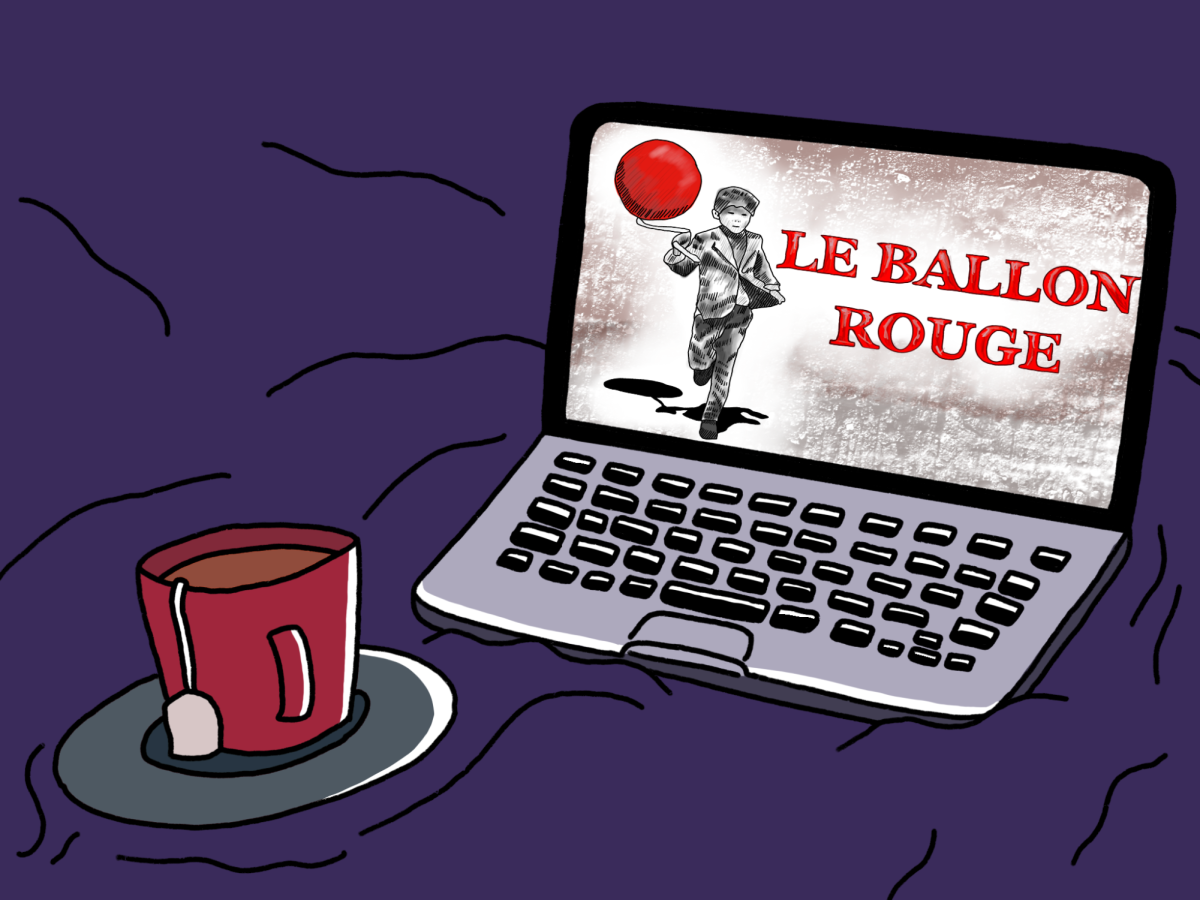Children’s films have often served a dual purpose. Not only do they entertain young audiences, but they can also offer important social commentary. Albert Lamorisse’s 1956 classic “The Red Balloon” is both a timeless piece of cinematic history and a touching depiction of childhood innocence. While aimed toward a younger audience, the way Lamorisse contrasts unbound curiosity with the growing restrictions of adulthood makes the message of this film universally applicable — especially for college students.
Lamorisse’s masterpiece follows Pascal, a young boy who finds a bright red balloon on his way to school. Viewers accompany the young boy on his journey through the dreary streets of Paris, traveling everywhere from his apartment to hidden back alleys. The French short film, mostly silent aside from the sounds of bustling city life and an emotional score by Maurice Le Roux, seamlessly depicts the feelings attached to childhood — the excitement of having a new friend, the baffling reactions of adults not understanding wonderous occurrences, and the agony of, in Pascal’s case, the balloon popping.
Throughout the film, Pascal is faced with teachers that find his balloon to be a nuisance, classmates who want to steal the balloon from him and his caregiver pushing the balloon out their apartment window. But through it all, he perseveres by holding on to the knowledge that the balloon will always find its way back to him.
At its core, the film is about innocence. The child’s gaze is tinged with imagination and that naivete leads to his optimistic worldview. The balloon represents hope, curiosity and wonder that all children possess.
At the end of the film, an abundance of balloons whisks the boy away, above Paris and into the sky. However, the plot doesn’t have a definitive ending; viewers are left with questions regarding where the boy is taken, what his caregiver must think of his disappearance, and how the balloon was able to follow him in the first place. Despite this, the emotional release that the beauty of the ending provides is satisfying.
The feeling of being a child grappling with adult responsibilities constantly looms over college students. The movie hints at that same shift in responsibility throughout — the red balloon almost becomes a pet to the boy, and he’s tasked with taking care of it. A large part of the short is about letting go of attachments and realizing that new beginnings and possibilities are right around the corner. Loss becomes grounds for new opportunities and experiences as we shift into a new manner of conducting ourselves as adults in a grown-up world.
Creativity, much like the red balloon, has a mind of its own. Whether you are a young child, a college student or a working adult, Lamorisse’s short demonstrates that despite the changes we go through from childhood to adulthood, our curiosity never really leaves us. That’s what makes this film lasting and pertinent. It is a reminder of the importance of imagination, responsibility and loss at any stage in life.
Contact Bianca Maiocchi at [email protected].


























































































































































